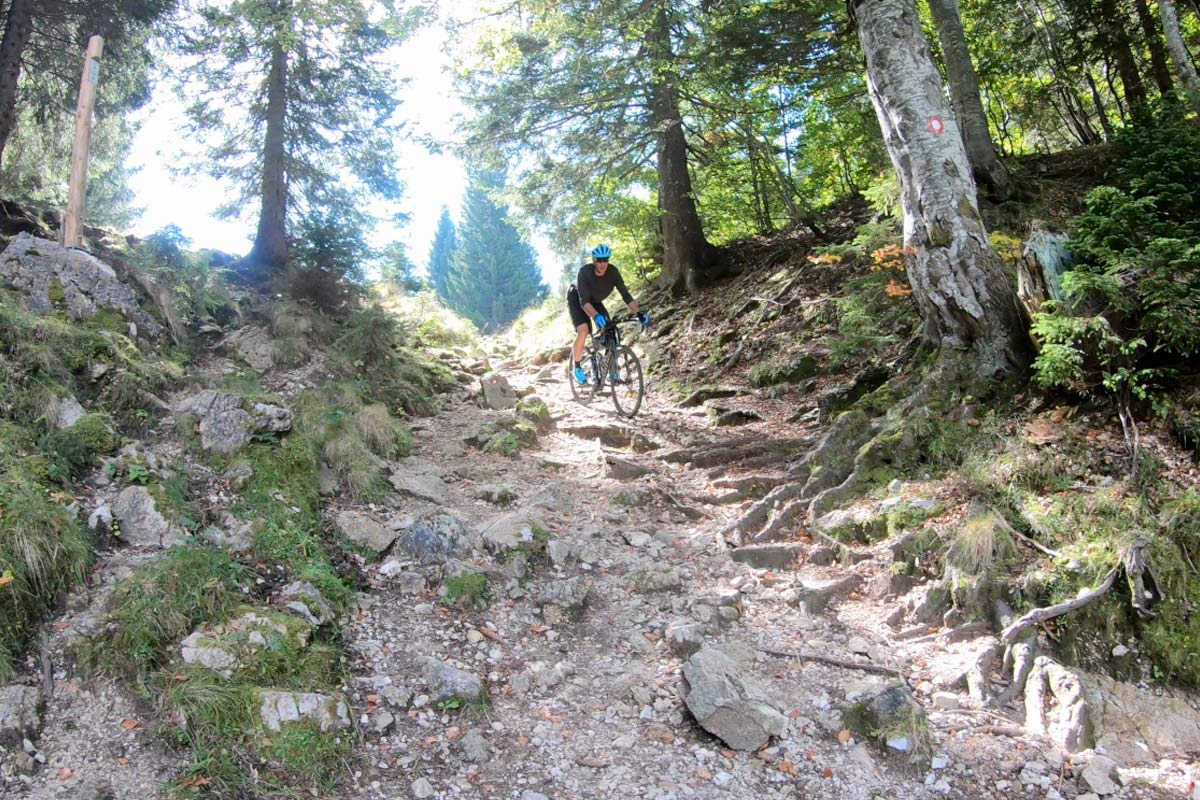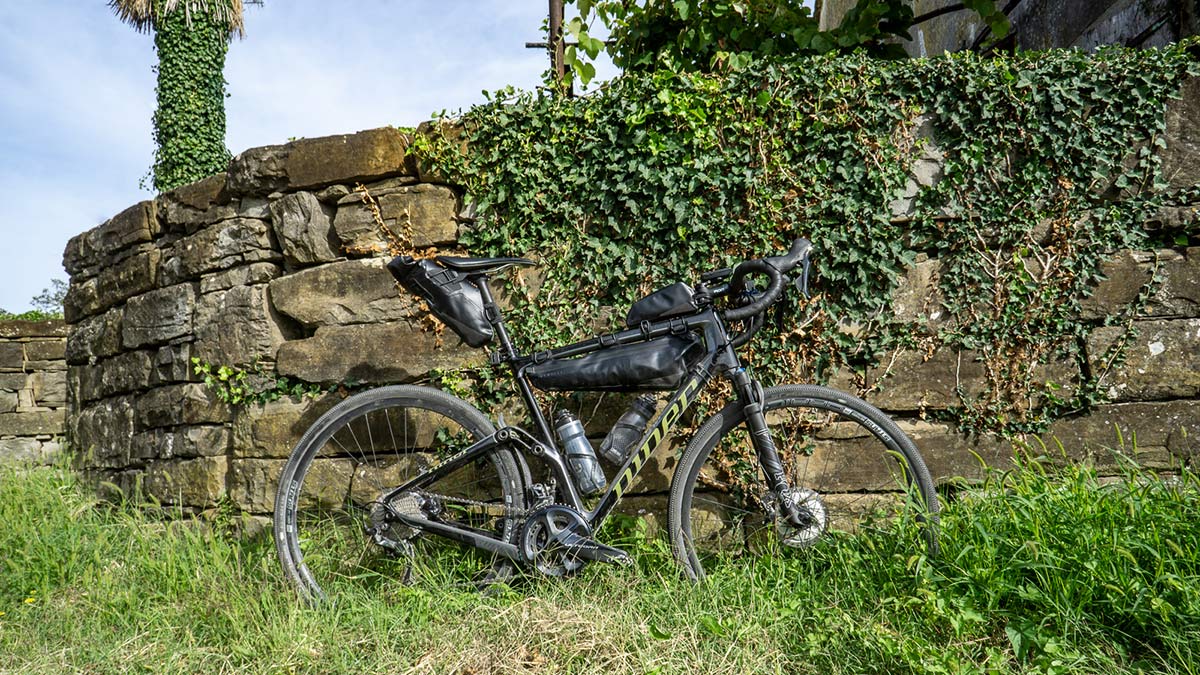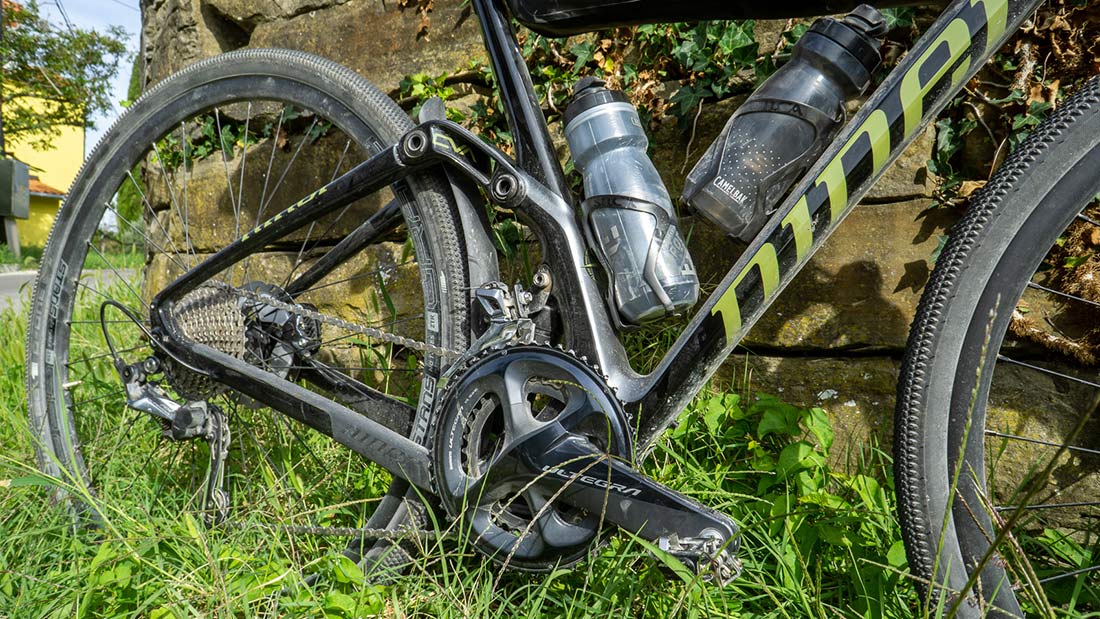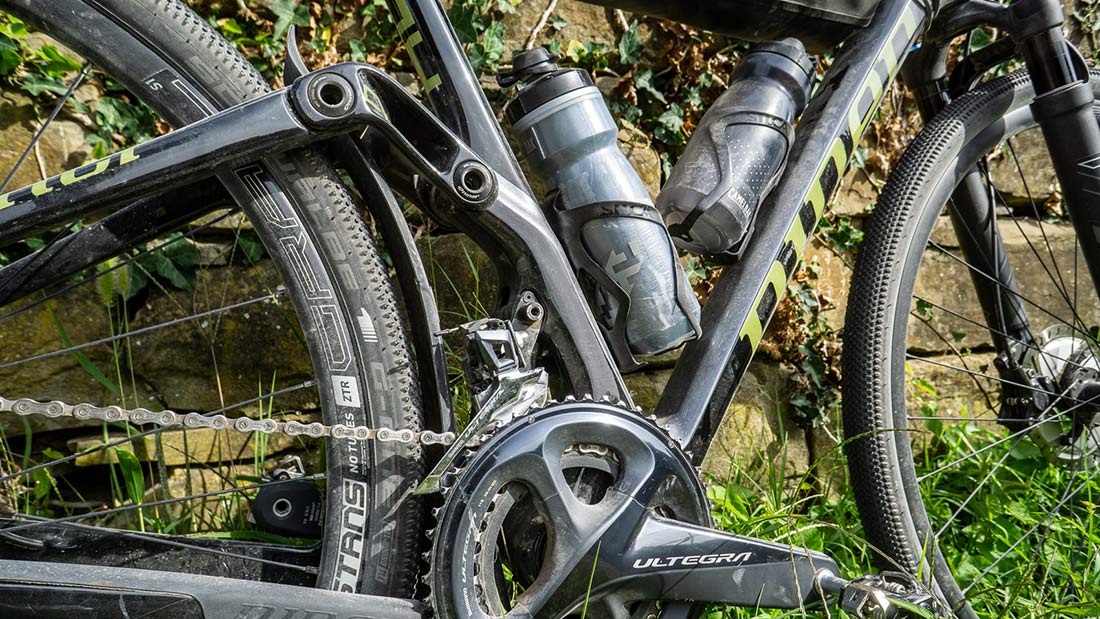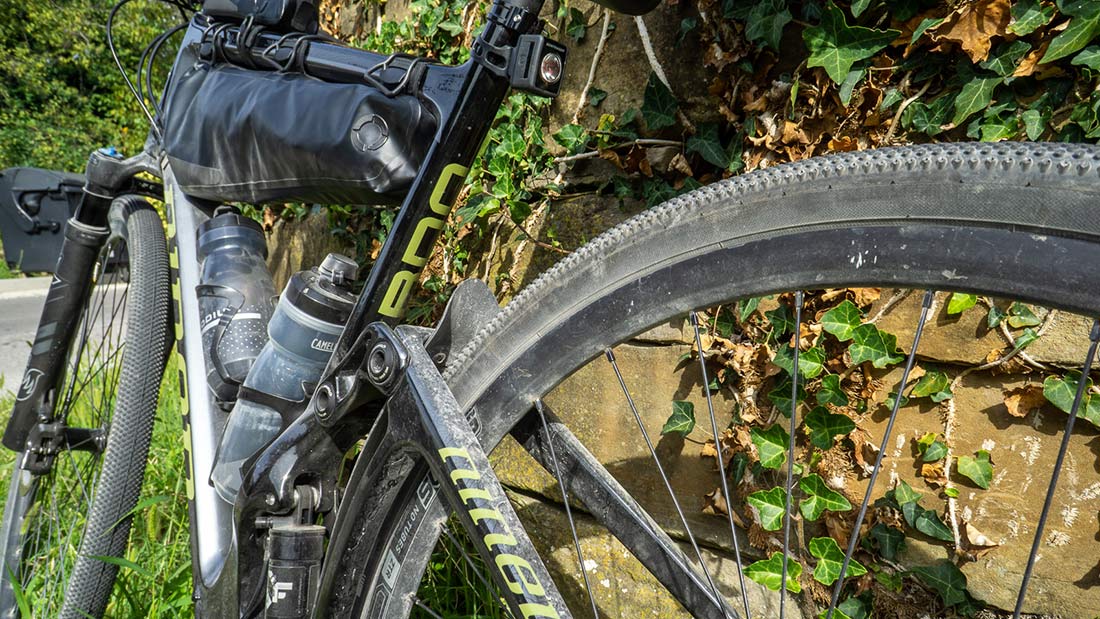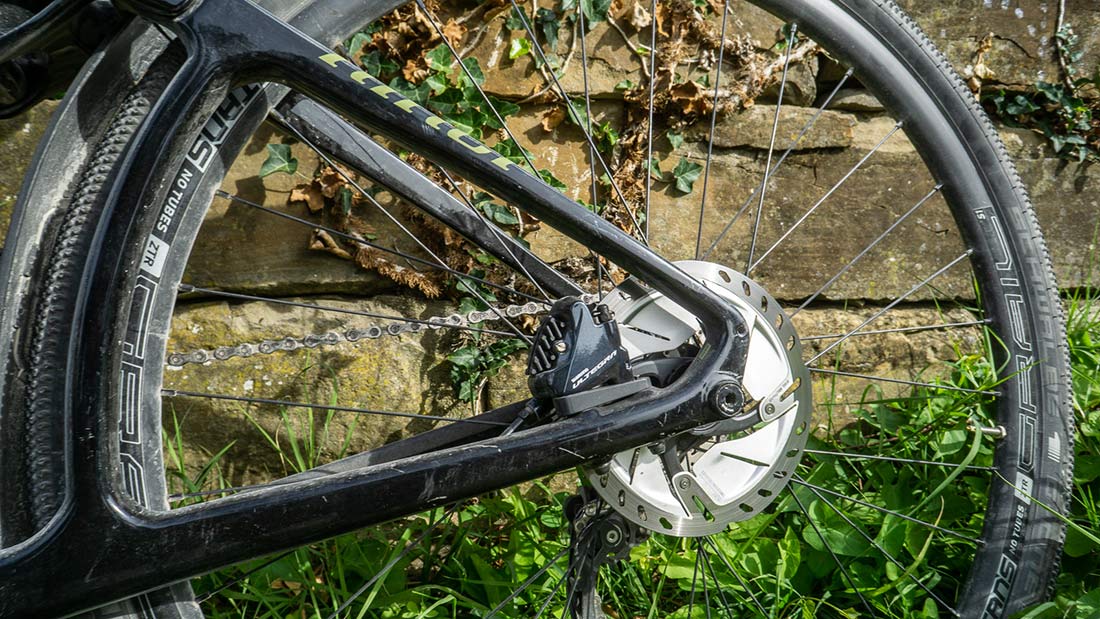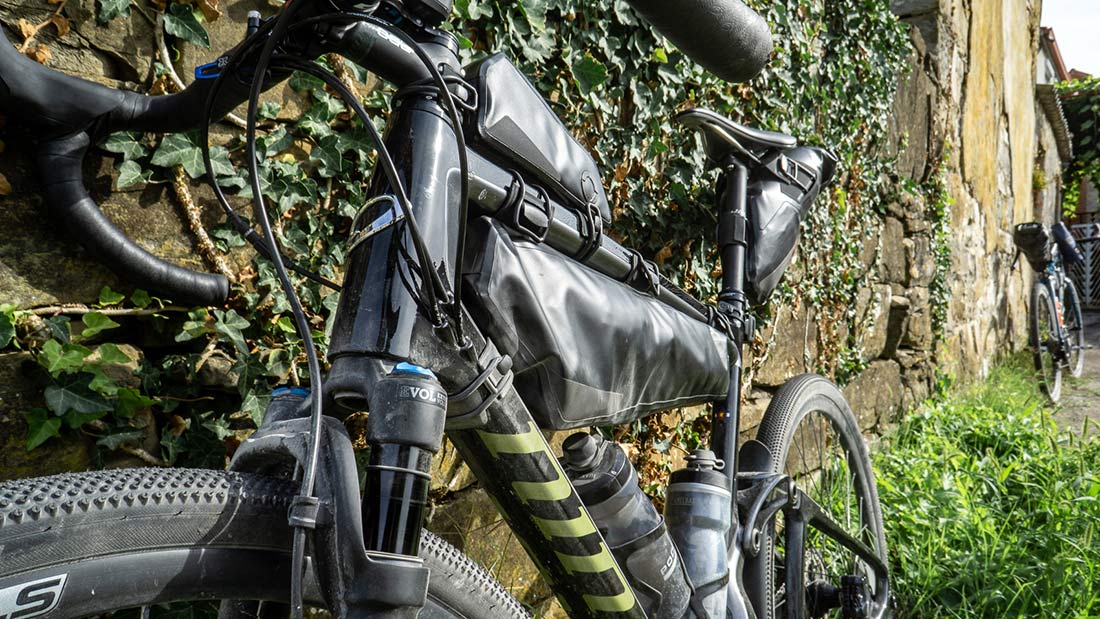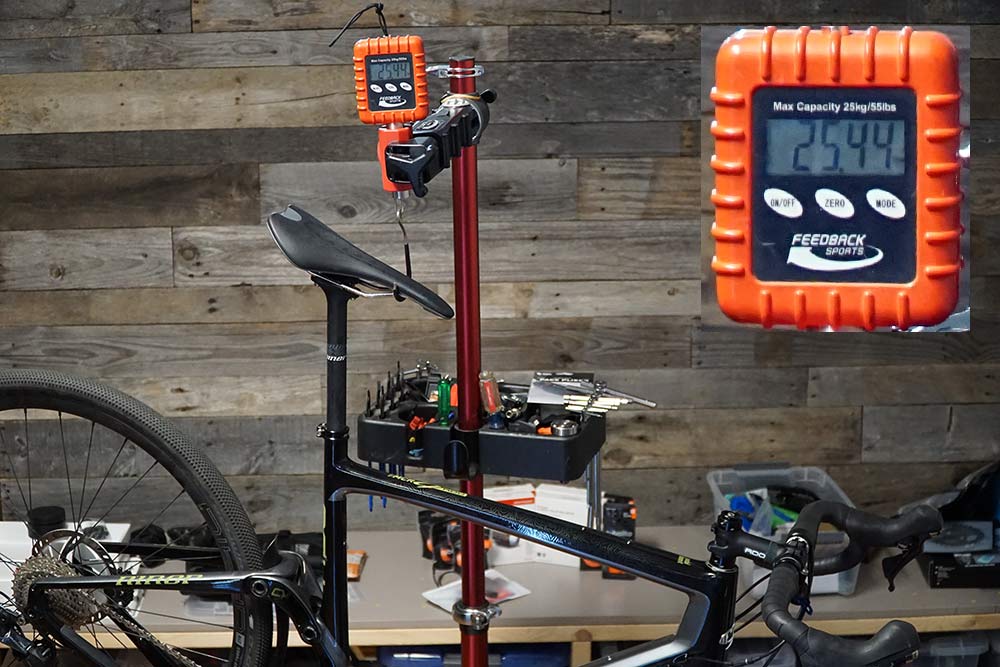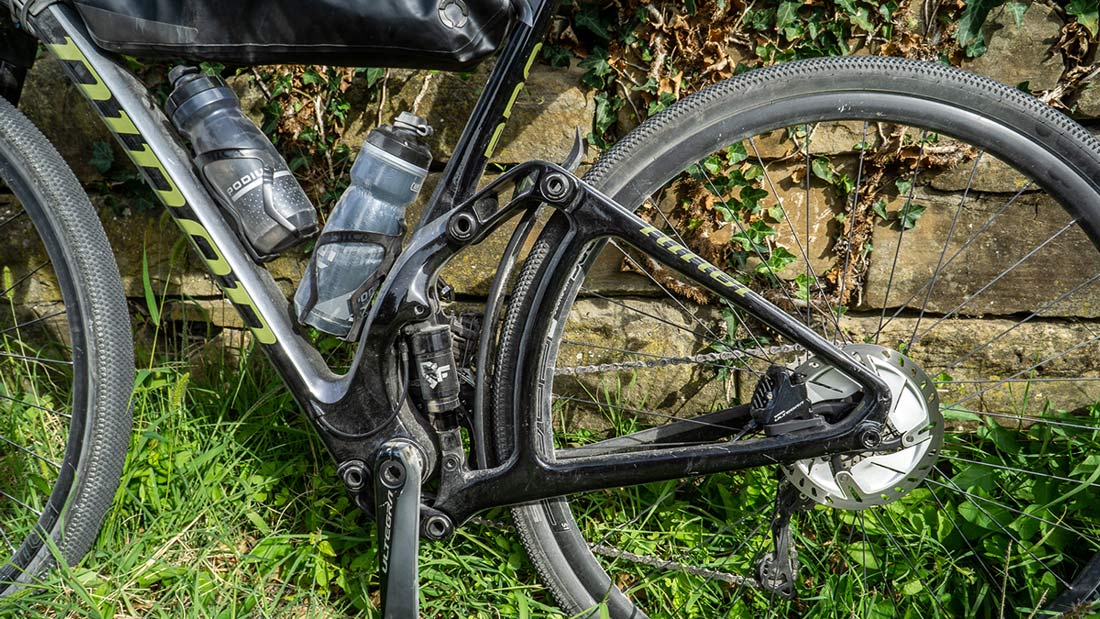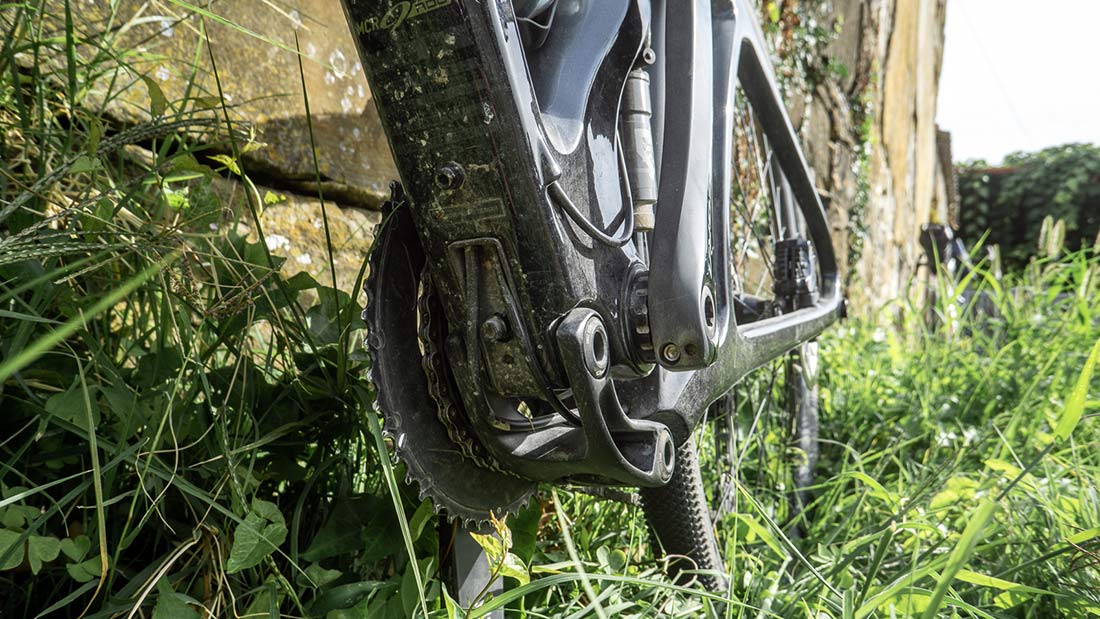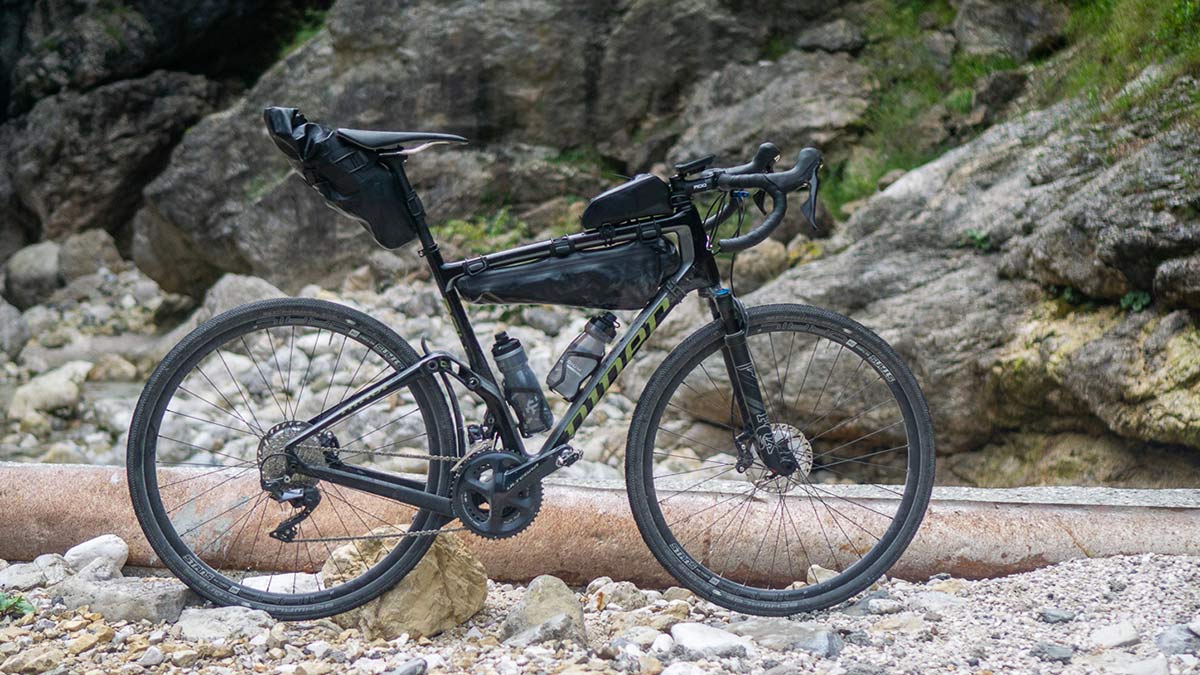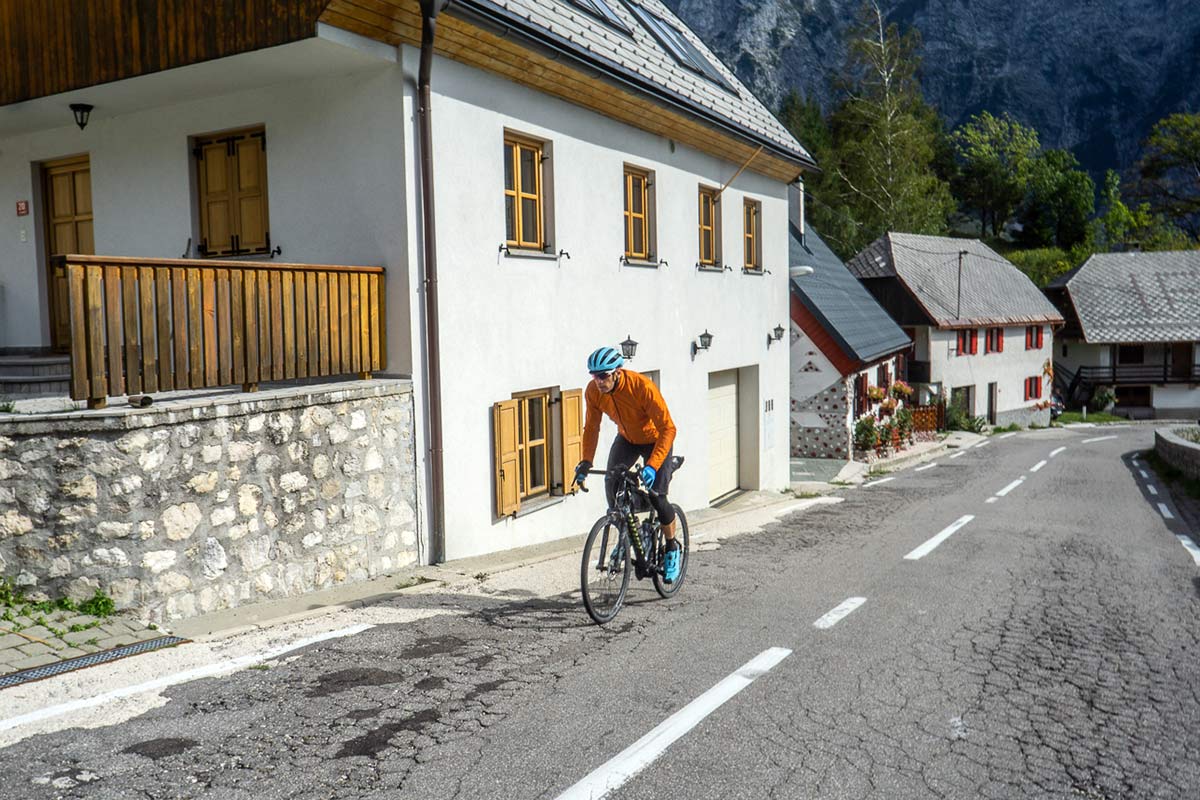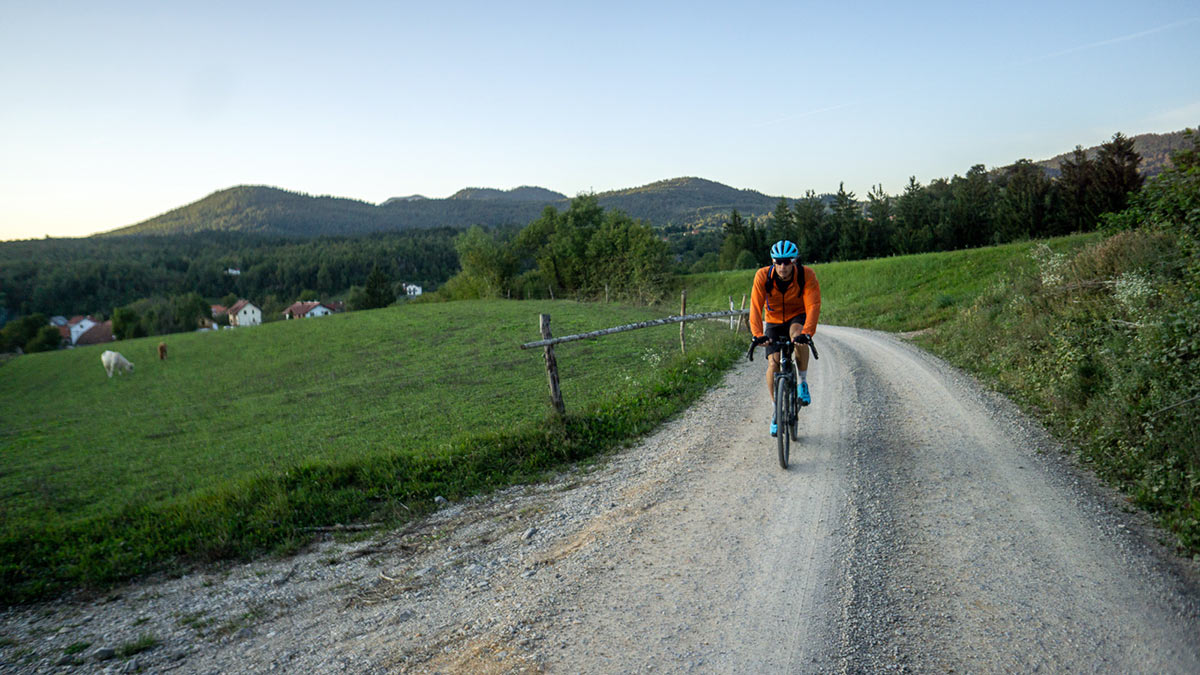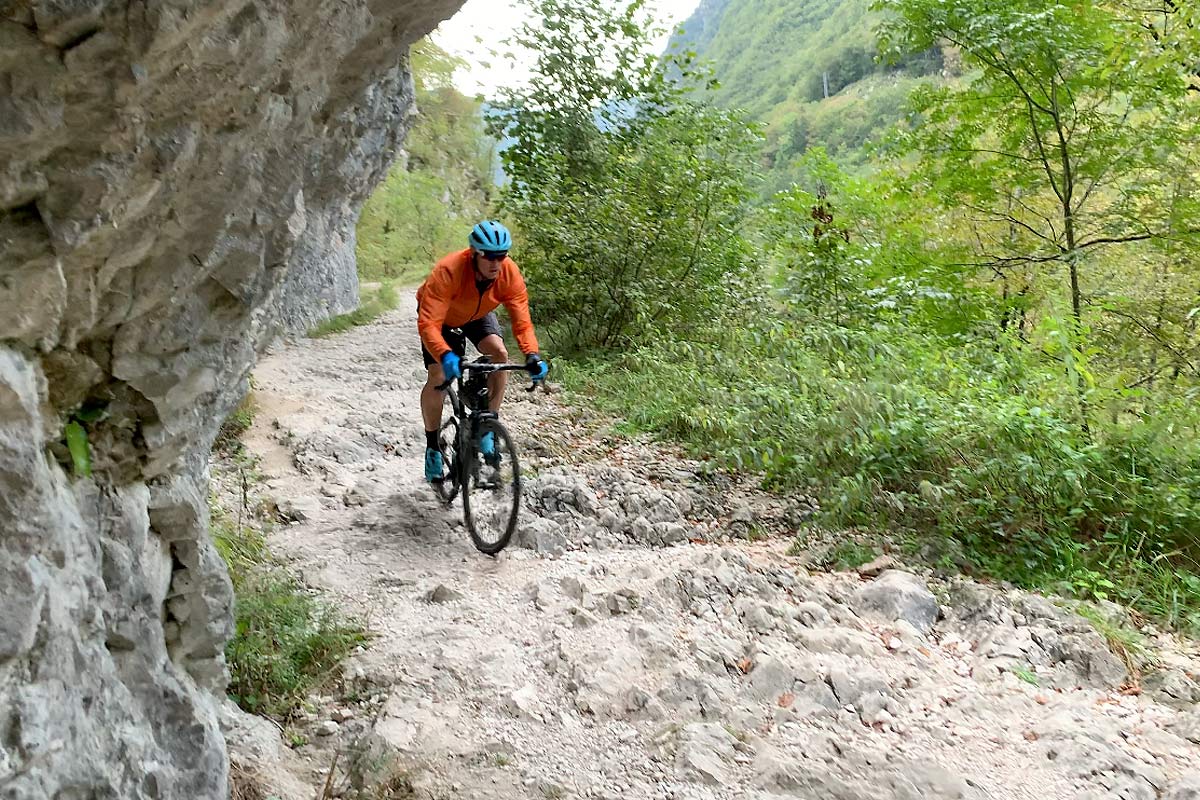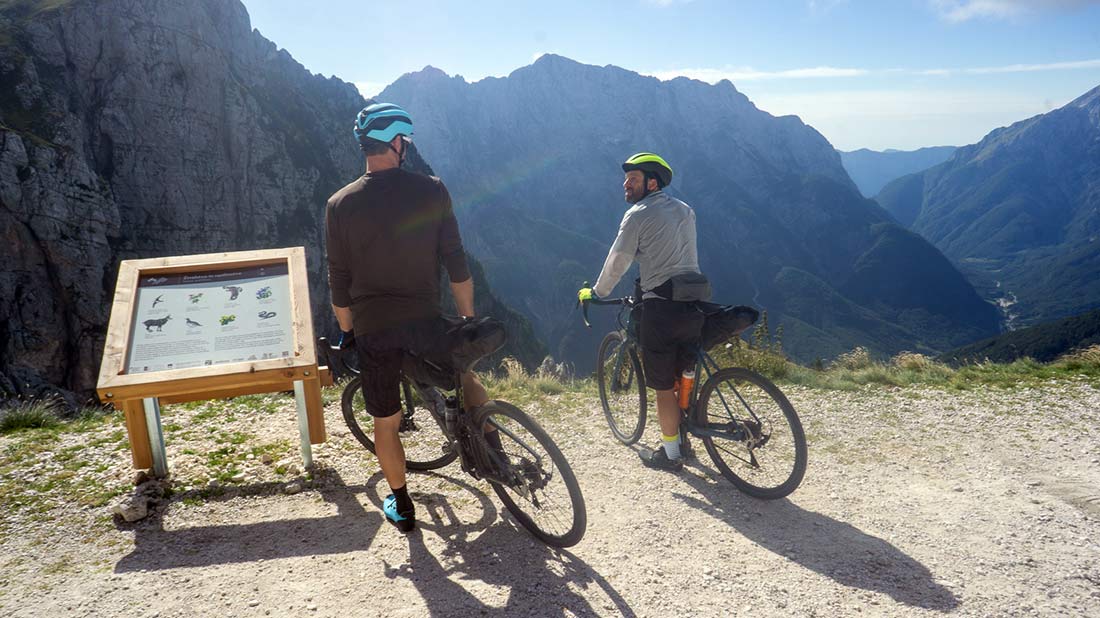For our gravel cycling tour of Slovenia, Niner provided us with two of their latest bikes. I rode the new full suspension Niner MCR 9 RDO, a bike that has been in development for more than two years. Arguably the first mass-produced full suspension gravel bike from a major brand, the MCR 9 is a bike that makes you want to do more. It lets you go beast mode on the rough stuff, but is a real beauty everywhere else. Here’s how it performed over week of riding everything from high mountain passes to coastline backroads, and why you might actually want to consider a gravel bike with suspension…
The Niner MCR 9 RDO overview
Nothing shows off a full suspension bike like video, and this one gives you plenty of action. Combine that with a closeup look and explanation of Niner’s CVA suspension, a few rocky and random challenges, and it’s a great overview of what you can expect from the MCR.
As you’ll hear in my intro, and in the interest of full disclosure, Niner provided us with the bikes for this trip and helped cover some of the costs. In no way did this affect our opinions or editorial review of these bikes, but it gave us the opportunity to test them and show off an amazing location. Full “Where to Ride” feature on Slovenia coming soon. Now, back to the bike…
MCR 9 tech details & actual weight
We’ve teased this bike so much that there are plenty of tight, clean detail photos from the tradeshows. Here’s what the MCR 9 looks like in the real world, with a little dust on it, decked out for adventure. Ideally, the way you’d actually set it up for riding several big days in a row. The build shown here is with Ultegra 2×11, however the top Shimano builds are now offered with GRX 800 in both 1x and 2x configurations. Those top out at $7,000 with the rest of the cockpit, wheels and suspension build you see here. The tippy top model comes with SRAM Force AXS 2×12 for $8,200.
Three frame sizes are offered…53, 56 and 59 (tested). At 6’2″ tall, the 59 fit me perfectly with a 100mm stem and 44cm wide handlebars.
Niner’s design laudably allows for a normal front triangle shape and standard front derailleur placement. That means two bottles inside the front triangle plus a frame bag, and big 50mm tire clearance (40mm come stock).
Another clever feature is the integrated fender. It’s short, mainly there to keep the rear shock clean, but still nice. Internal, fully sleeved cable routing keeps those clean, and easy to swap or service.
Despite that shock’s placement behind the BB, the chainstays are within normal range at 17.1″ horizontal (17.3″ actual)…or 437mm (440mm). That gives the MCR good stability at speed without any sluggishness around corners or when getting playful in the singletrack.
A one-piece rear triangle also helps keep it stiff. Lock out the suspension and the bike feels solid. It’s never going to feel like a hardtail (yep, I said it…a “hardtail” gravel bike), either in sprints or swaying back and forth under you. But it’s also not going to slow you down. More on that below…
The frame has 11 mounting points for bottle cages, frame bags, bento boxes, etc. You do lose the rear rack mounts and fork leg mounts, but we were still able to pack plenty of gear for an all-day ride in our Roswheel bags.
The complete bike with 2×11 Ultegra and tubeless tire setup came in at 25.44lb (11.54kg) without pedals. Chances are the GRX group will come in about the same thanks to the Easton EA50 cranks. Easy upgrades to drop weight would be to add a carbon handlebar or upgrade further to Easton’s superlight EC90SL cranks. Keep in mind, that suspension fork is likely adding at least 1,000g over a rigid carbon fork, too.
MCR 9 suspension setup
For mountain bikers, this is going to look very familiar. You get it. Suspension is good for making you faster on rough terrain. And improving control. But this one works and feels a little different.
For roadies converting to gravel, here’s the quick of it: Niner uses a 50mm travel rear suspension design paired with a 40mm travel fork. Both use air springs, and the front has any user-tunable compression and rebound damping. The Fox AX fork gives you three-modes of compression damping plus fine tuning, air volume adjustments, and a wide range rebound adjustment. If you have no idea what I’m talking about, don’t worry. The travel is so short that if you get the sag set up properly (oops, did I lose you again?), it’ll probably feel pretty good. Then just fiddle with things. And read our Suspension Setup Guide.
So, what’s the difference between Niner’s gravel full suspension and, say, their RKT short travel XC mountain bike? The damping and kinematics. Air springs are naturally progressive (dang, did it again…sorry roadies). That means it ramps up as it moves through its travel (I give up). Which in laymen’s terms means it gets firmer as the suspension compresses. With such a small amount of travel, it could very easily be a harsh bike. So Niner revised the kinematics to give the rear end a higher leverage ratio (sorry) so it would feel smooth all the way through.
The result is a very plush, if springy, bike that likes to blow through its travel. And it does on big hits, but somehow still doesn’t bottom out harshly. Niner’s reps told us that we should bottom out a few times per ride, that that’s what it’s designed to do. And we definitely did. Hit a rain bar at full speed? Smooth. Pothole? Glass. The feeling of nailing these things at full speed and feeling this floomp of the suspension just gobbling it up is supremely satisfying.
One more quick note on Niner’s patented CVA design. It relies on a lower linkage sitting below the bottom bracket. On longer travel mountain bikes, it’s definitely a target for rock strikes. Here, not so much. While it may look super low, the actual pedal clearance is as good as any other modern gravel bike.
Niner MCR 9 ride review
I know, you have a lot of questions. I have answers. So here goes, starting with the easy stuff:
Do I really need a full suspension gravel bike?
No. But there are times when you might want one. Watch the video at the top of this post, there are sections I would not have ridden nearly as fast (or even wanted to) with a rigid bike. Horses for courses. Is the suspension worth the weight? Again, depends. Despite the 4-5 extra pounds it adds, there were sections where I was definitely faster than my friend on the RLT. But he crushed me on the climbs. But he’s also much faster and lighter than me. Basically, other than the weight, I never felt like I was giving anything up by having full suspension. But there were definitely times when it was an advantage on this trip.
Does a full suspension gravel bike climb well? Does it bounce a lot?
Yes, and not really. Lock it out using the convenient lockout switch on the handlebar and the MCR 9 climbs about as well as any other bike. It’s the engine that matters, and I know my engine’s limitations. There’s just a slightest hint that something’s moving, in the same way that any full suspension mountain bike won’t ever feel the same as a hardtail, but it’s not a deal breaker. I couldn’t actually see the suspension moving when it was locked out. And even when I left it open, it wasn’t bouncing around uncontrollably.
Shouldn’t the rear shock have compression and rebound adjustments?
I didn’t miss them. The travel is short. Niner designed it well. And they designed it to work a certain way, and it seems like they got it right. Adding external controls is cool if you’ve got a lot of travel to work with. And I do like to tinker with things. But I don’t think it’s necessary here. The suspension is bouncy (watch the video) in the parking lot, and rebound is quick. But it just works really darn well, without every feeling like the rear end wanted to buck up from a hit and cause a loss of control. In fact, if you watch the slow motion bit on the uphill stair ride, you’ll see that the tire maintains perfect traction and contact with the steps the whole time.
UPDATE: Actually, that rear shock does have a rebound adjustment dial. It’s just tucked so far up in the upper shock mount area, and it’s so small, that it’s basically invisible. I looked for it no less than five different times. And then I was convinced it didn’t have it. But it does, Niner says so.
How does the MCR 9 handle? Can I add a dropper post?
In a word, great. It’s stable and well mannered, which is good for just cruising along mile after mile, hour after hour. It’s also good for keeping the rider’s weight centered on steeper, gnarlier descents. There were a few sections where I wished I’d had a dropper post (and I did manually drop the seat height for the Giant Wet Staircase Challenge) so I could get my weight back further, but overall it was fine. There is routing for a stealth dropper post if you want to add one.
OK, but seriously, suspension? Really?
If you want to ride huge, chunky rock sections like this without slowing down, then yes. I would not have ridden this section (or others like it, see next photo) either as fast, or at all, with a standard gravel bike. It opens up options for different routes, and it definitely kept me feeling fresher over long rides. My wrists didn’t hurt, and I never felt beat up. And seriously, seriously, the first time you hit a rain bar at full speed, you’ll just relish it.
Can I use the Niner MCR for bikepacking?
Sure, if you pack light. Or wear a backpack, too. Or just go credit card bikepacking (aka eating at restaurants and sleeping in hotels). Niner’s making custom bolt-in frame bags that’ll fit their entire gravel bike lineup. Or use your own. We used Roswheel’s strap-on waterproof frame bag, bento bag and seat bag and they were great. I was quite surprised by how stable everything was over the rough terrain…no bouncing, shifting or excessive noise to distract from the ride. Add a handlebar roll and you could probably even get a simple one-nighter setup on there…you just may need to flip the rear shock remote over to the left side and face it backward.
Yeah, but would you buy one?
Depends on where I was going to ride the most. For backcountry stuff with equal parts singletrack and dirt road, sure. For ultra distance events typically done on a mountain bike? Maybe. Seems like this might be faster. If drop bars were allowed, I suspect these things could knock down records in “mountain bike” events that *cough* simply aren’t that technical. And depending on that, I’d have to decide between the 1x or 2x. As much as I love 1x for CX and MTB, and thus far for gravel, too, having a double in Slovenia was great. We covered a lot of miles on asphalt and smooth dirt roads, too, so that extra high end range helped speed things up. But it’d be nice to drop more than a pound from the bike, too. Hmmm. Just one more decision to be made…
The takeaway
The Niner MCR 9 RDO is a good gravel bike. Really good. They nailed the suspension’s performance to the point where it was just there making me a better rider, not something I was thinking about. Never a distraction. Handling is spot on. Features and options are all there. I had a lot of fun on it. And isn’t that really what it’s all about?
